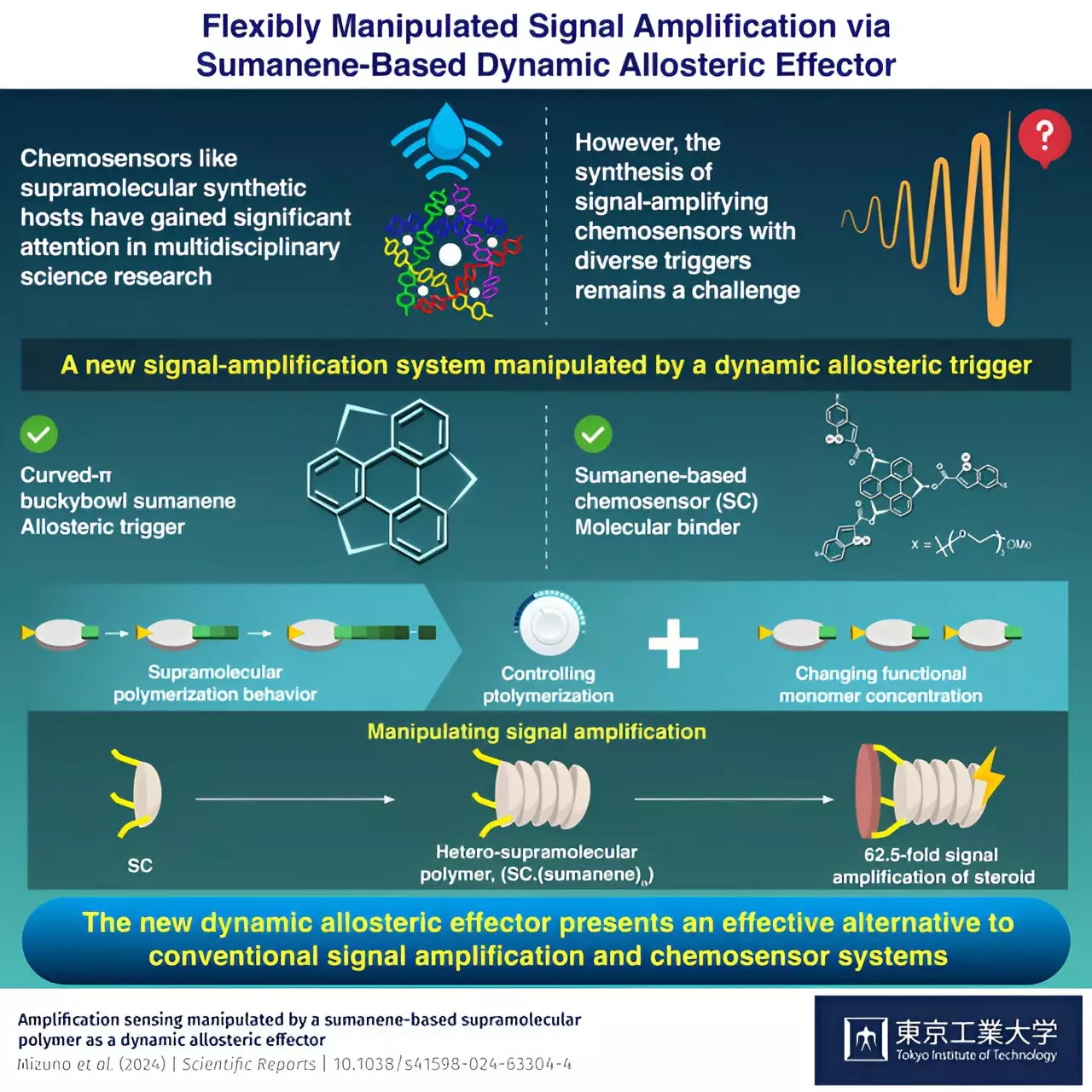In the realm of multidisciplinary sciences, chemical sensors have long been heralded as pivotal tools for real-time molecular detection and biomedical applications. However, creating sensors that not only detect but also amplify signals through various dynamic triggers has proven to be a daunting challenge. Historically, the development of effective chemical sensing systems has faced significant hurdles, primarily due to the limitations of traditional methodologies that rely on the lock-and-key model. This classic approach maintains a simplistic view of molecular interactions – one where the sensor must precisely match its target to elicit a measurable response. This paper explores a groundbreaking advancement that challenges this notion and suggests a transformative leap forward in the field.
Allosteric Manipulation: A Game Changer
Researchers at Tokyo Institute of Technology, under the leadership of Associate Professor Gaku Fukuhara, have turned the tide with innovative findings recently published in Scientific Reports. Their novel signal-amplification system ingeniously manipulates chemical signals through dynamic allosteric effectors, a substantial advancement in the way we understand and utilize chemical sensors. Notably, the researchers achieved this by leveraging sophisticated supramolecular polymerization techniques, employing the unique properties of the curved π-buckybowl molecule known as sumanene.
The team’s findings indicate that by adjusting the concentration of sumanene monomers, researchers can finely tune the degree of polymerization, effectively enhancing the binding affinity between the sensor and target molecules. This manipulation not only amplifies the sensory signals but also introduces a degree of flexibility previously unseen in typical sensor architectures.
Redefining the Lock-and-Key Model
While the lock-and-key model has served as the cornerstone of biochemistry and molecular recognition, it is not without its flaws. This method inherently limits the complexity and adaptability required for modern chemical sensors, especially in environments where the target molecules are rare or poorly recognized by conventional methods. The introduction of this new allosteric signal amplification system significantly enhances the sensor’s sensitivity by exploiting the natural biological mechanism of allosterism, wherein the binding of a molecule at one site can influence the binding properties at another site within the same protein complex.
The researchers’ innovative use of sumanene monomers to foster supramolecular interactions marks a paradigm shift. Reintroducing flexibility into sensor design means that by altering monomer concentrations, one can adjust the signal amplification dynamically, thereby creating a responsive sensor capable of adapting to varying concentrations of target molecules.
Real-World Applications and Implications
The implications of this breakthrough extend far beyond theoretical discussions. Fukuhara and his team conducted experiments utilizing steroids such as testosterone and corticosterone, observing an astonishing 62.5-fold signal amplification in response to concentration variations. These findings point toward a powerful application for chemosensors in biomedical diagnostics, where detecting minute changes in biomarker levels can be critical.
Moreover, this study guides the development of sensors that can tackle complex molecules traditionally seen as challenging or impossible to capture accurately. The potential to target a wider array of molecular guests presents exciting opportunities in pharmacology and environmental monitoring, offering scientists sophisticated tools to better understand complex biological systems.
A Vision for the Future of Chemosensors
The research conducted by the Tokyo Tech team is illustrative of a transformative moment for chemosensor technology. Rather than being constrained by the limitations of outdated models, the exploration of new signal amplification mechanisms heralds the dawn of a new era where sensors can be designed with greater versatility and precision. As the scientific community continues to explore the intricacies of supramolecular chemistry and allosteric effects, we stand on the brink of a significant evolution in the capabilities of chemical sensors.
With Fukuhara’s insights illuminating pathways for further research and development, the future of chemical sensing is bright. The pursuit of responsive, adaptable, and highly sensitive sensors can revolutionize our approaches to monitoring biochemical processes, leading to enhanced diagnostic tools and improved therapeutic strategies. This moment is not just a stepping stone; it is a leap toward a future where chemical sensing can meet the challenges of increasingly complex biological landscapes.

